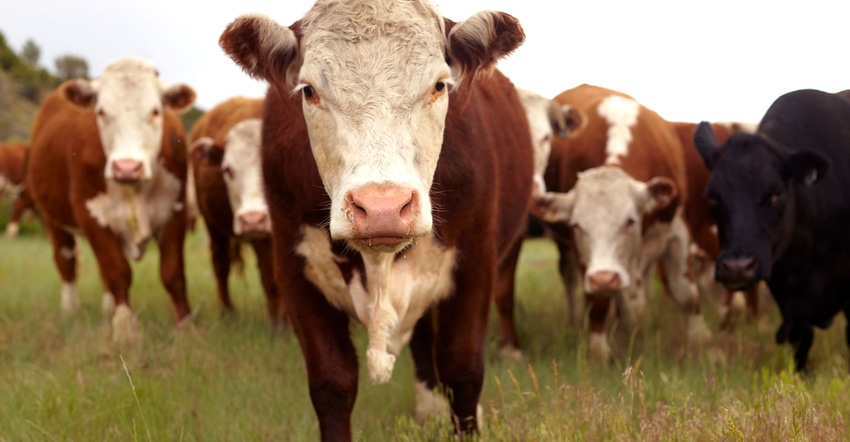August 19, 2020

Having grown up in the ’50s and ’60s, the experience of social distancing and self-quarantine in recent months hasn’t really been too much of a struggle for me. After all, if you grew up on a farm in rural Ohio in those days, the only time you saw anyone but your closest neighbor was at the feed mill, church or baseball practice. Speaking of baseball, another lesson from those days that’s served me well is this: When in a close game, you don’t want to be sitting on a fastball if the pitcher you’re facing can throw a change-up for a strike. Suffice to say, Mother Nature continues to prove she can throw any pitch she wants, at any time, and throw it for a strike.
To suggest we’ve needed to remain flexible this year would be an understatement. However, much as experiences from past years serve us well today, at some point we’ll draw on the challenges of 2020 to our benefit. Until then, let’s reflect on our recent past.
Too wet plus too dry is not just right
After experiencing three consecutive Ohio winters and springs of near-record precipitation, followed by dry summers, is it time to assemble a feed management plan that buffers the cow herd against stresses resulting from foul weather? Feeding pads, managed rotational bale grazing and stockpiled forage all go a long way toward keeping cows out of the mud. While managed grazing requires less investment, a feeding pad allows forages to be processed and bunk-fed for more efficiency — and when needed, blended with additional protein or energy from byproduct feed sources.
We can’t starve a profit into a cow, and feed quality, feed waste and cow condition must be monitored using a variety of tactics.
The value of using cover crops for feed or bedding is well-documented in Ohio. Cover crops fed to beef cattle remain a valuable asset, particularly in these times of limited forage and bedding supplies.
Freezer beef is back
Last year, if you wanted to schedule a beef for custom-kill, it was common to get an appointment within a month or two. Today, in many cases, butcher shops are booking out nearly a year. The message seems clear.
Despite some spikes in price at the retail counter resulting from coronavirus-related supply chain issues, consumers want meat — and in particular, they want high-quality beef. They trust in beef’s nutritional value and prefer to buy it from a farmer when they can.
How long this seemingly rediscovered phenomenon will continue remains to be seen. But, if you enjoy marketing direct to the consumer, don’t miss an opportunity. Consumers trust you and want your product! Even during times of tight cash, quality beef purchased from a trusted cattle producer sells!
Pricing isn’t always fair; contracted cattle not so bad
The beef supply chain issues that allowed freezer beef to become such a hot commodity are also what caused a slowdown in fed cattle movement this spring, resulting in pressure on prices. Keeping a feedlot current in this environment is particularly difficult for cattle feeders who can’t contract pot-loads of fed cattle. Often in the past, we’ve suggested the solution to this dilemma is the ability to team up with neighbors and collectively “work big.”
Twice in the past year, we’ve seen the benefits of having contracted cattle. The first time was a year ago, when a packinghouse fire temporarily reduced U.S. harvest capacity. This spring it resulted from worker health issues that necessitated closing packing facilities for periods of time. It’s hard to chastise cattle producers who protect their margins by contracting or hedging at profitable prices. Find a way to do the same, regardless of size and scale of operation.
Imports are not the enemy
At a time when retail beef prices were escalating, and cattle were held on the farm due to well-documented supply chain issues, the importation of beef came under fire in some sectors. Few of these imports are competition for the high-quality beef raised in the U.S.
Imports are predominately lesser-valued lean trim that’s blended with domestic beef fat and used for the hamburger offered in most fast-food chains. Without the imported lean trim to blend it with, fat from domestic slaughter has little value and is most likely rendered.
Importance of disease tracking system
Since spring, many have expressed frustration that Ohio’s disease tracking system cannot efficiently track outbreaks of COVID-19. How many times have we heard that if we don’t implement a standardized tag-based tracking system for our livestock, it will be nearly impossible to track that outbreak to its source in the event of a disease outbreak?
We’ve visited with our youth-owning livestock projects for at least the past decade about the importance of biosecurity. Those lessons included hand-washing and using sanitizer to prevent the spread of livestock disease. Today, we’re each being asked to use those same biosecurity techniques we’ve taught youth for years. Is it also time we begin to take the need for a standardized livestock tracking system seriously?
Adapt and change
Colleague Les Anderson, University of Kentucky Extension beef specialist, recently said it best in his monthly newsletter: “Adapt and change. It’s the story of life, and it’s how we evolve.”
To do that we must value experience, stay flexible and be prepared for the next change-up Mother Nature throws.
Smith is a program assistant in the Ohio State University Extension office in Fairfield County and a member of the OSU Extension Beef Team. The Beef Team publishes the weekly Ohio BEEF Cattle letter. See the letter at beef.osu.edu.
Source: OSU, which is solely responsible for the information provided and is wholly owned by the source. Informa Business Media and all its subsidiaries are not responsible for any of the content contained in this information asset.
About the Author(s)
You May Also Like




